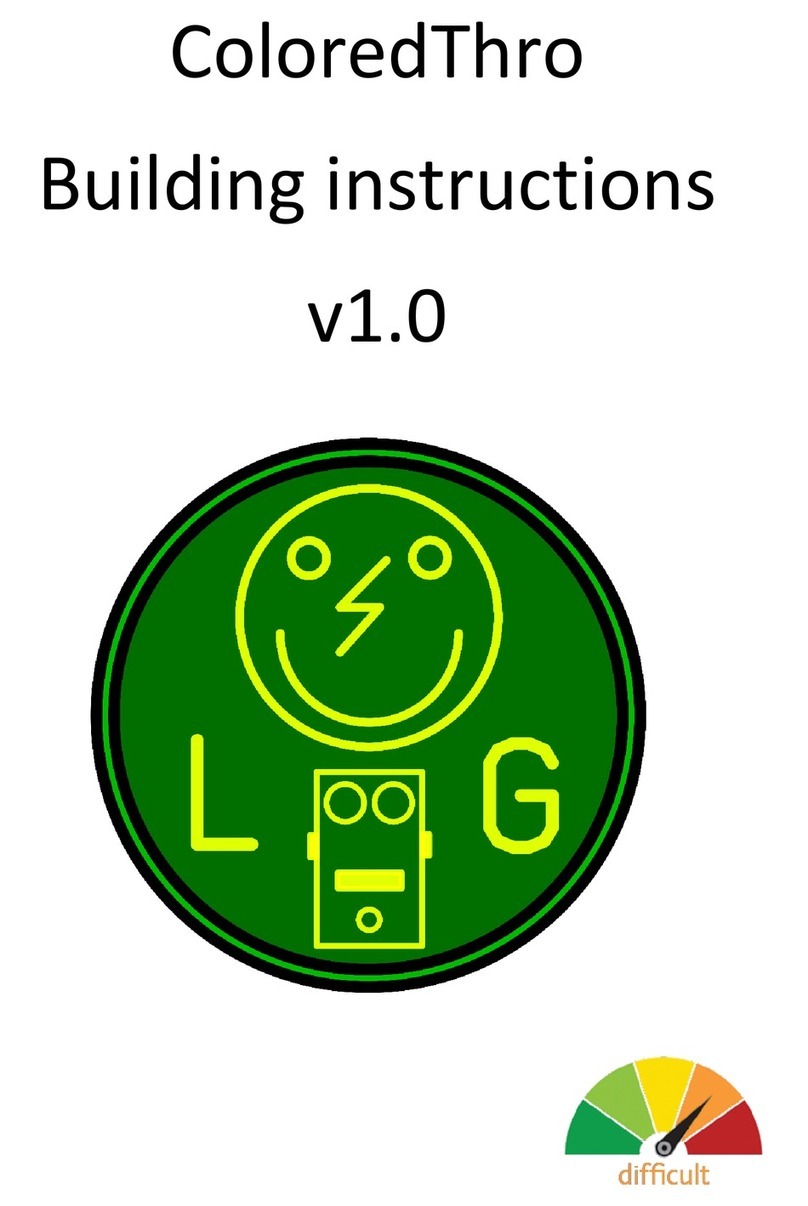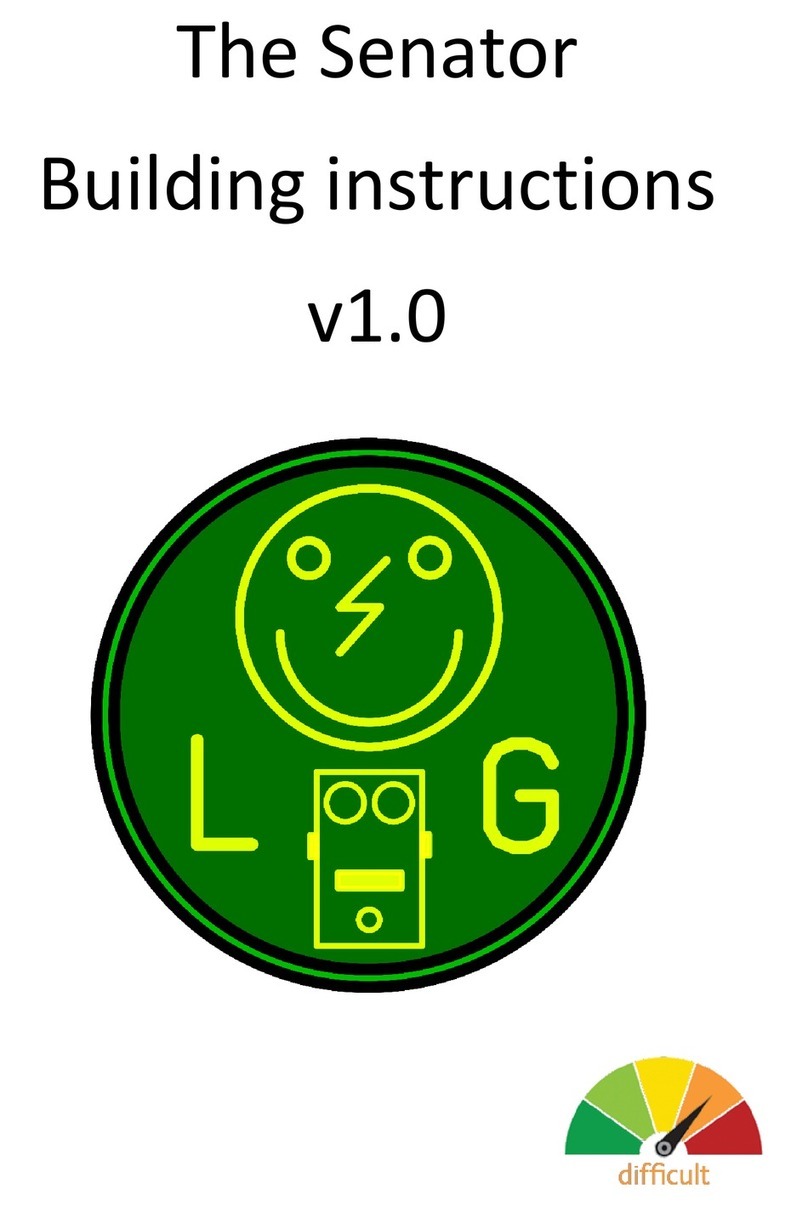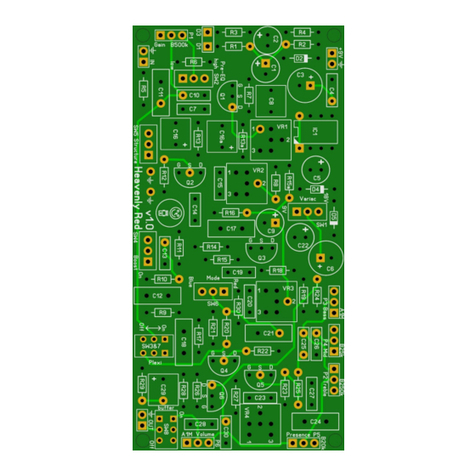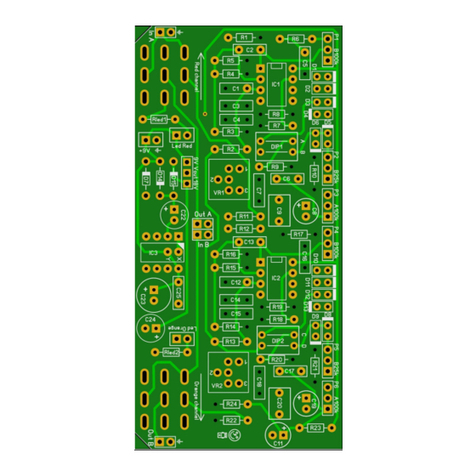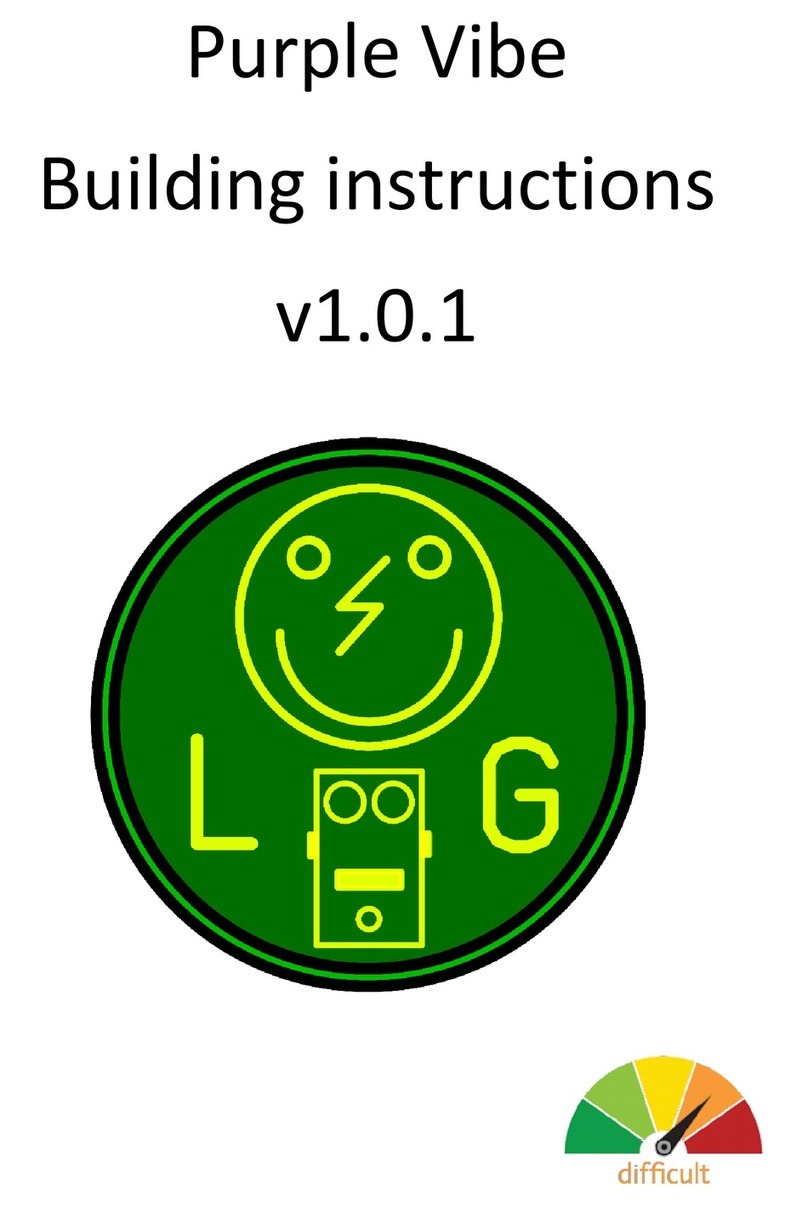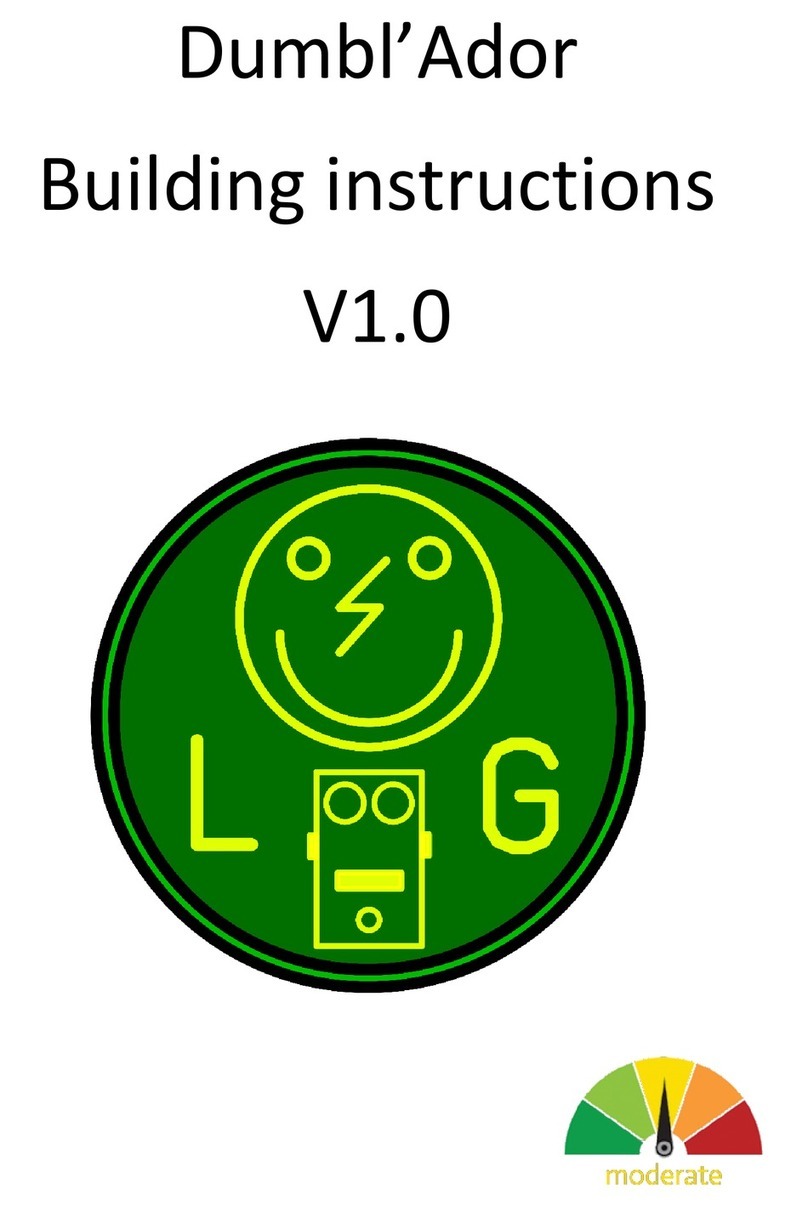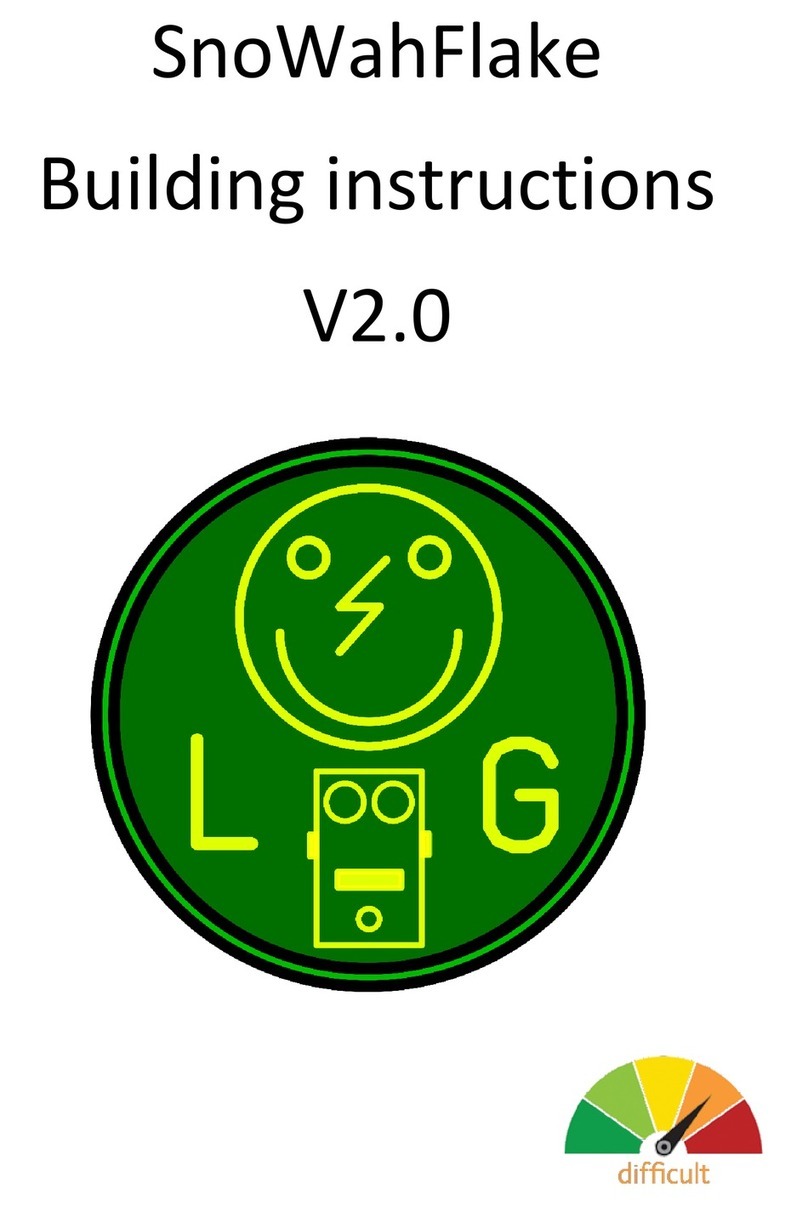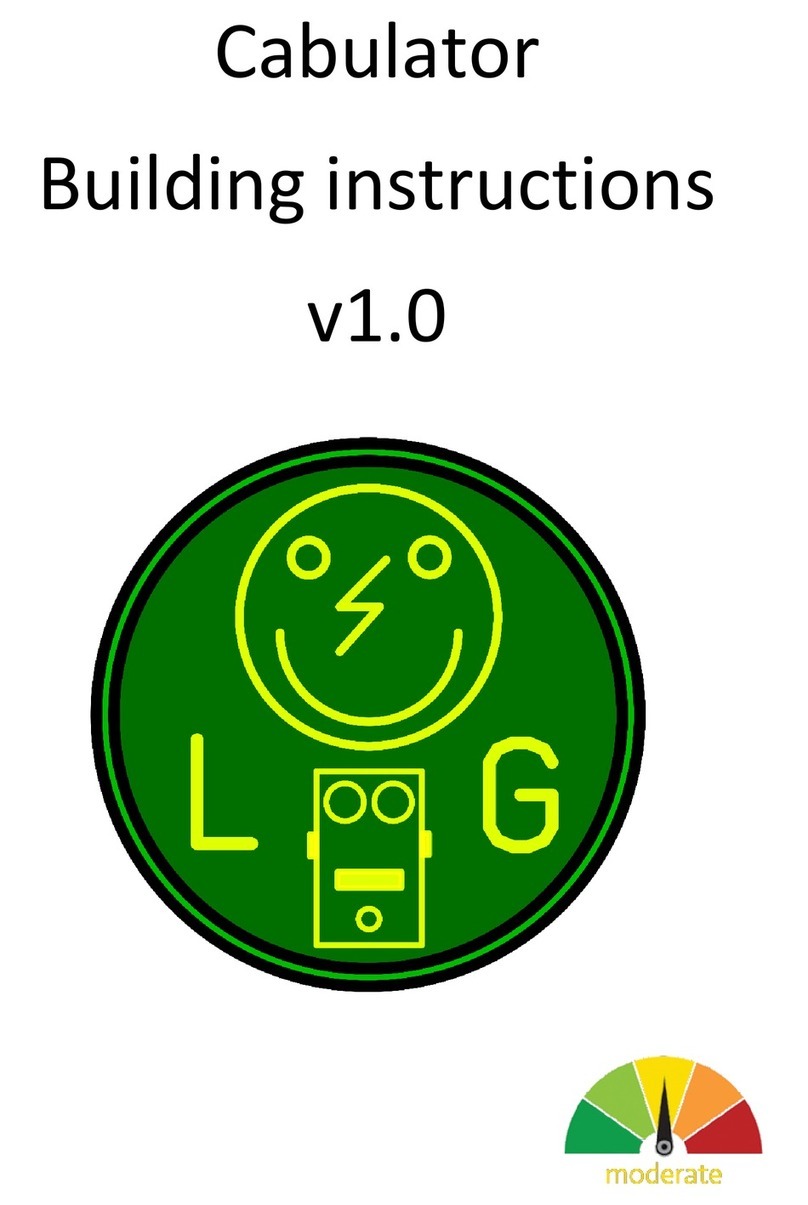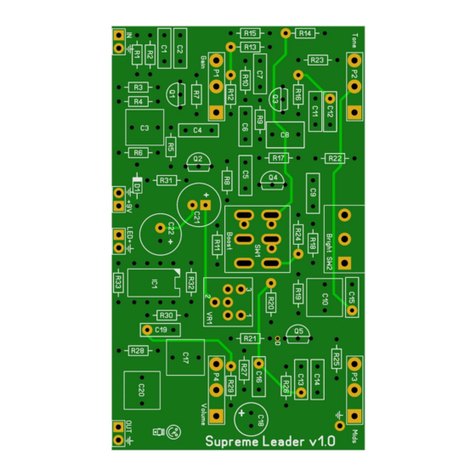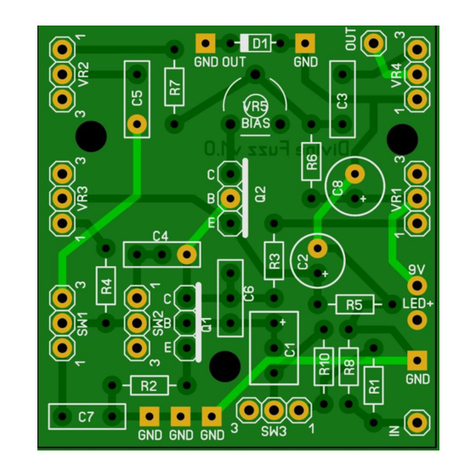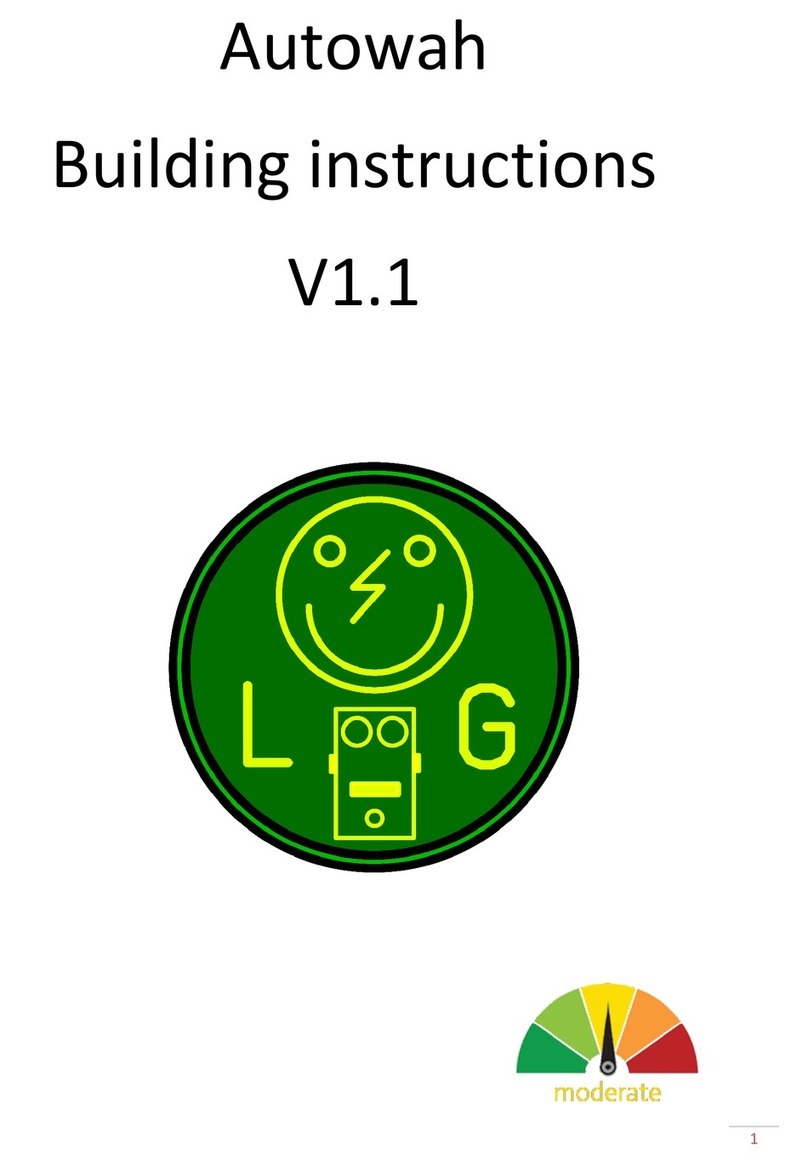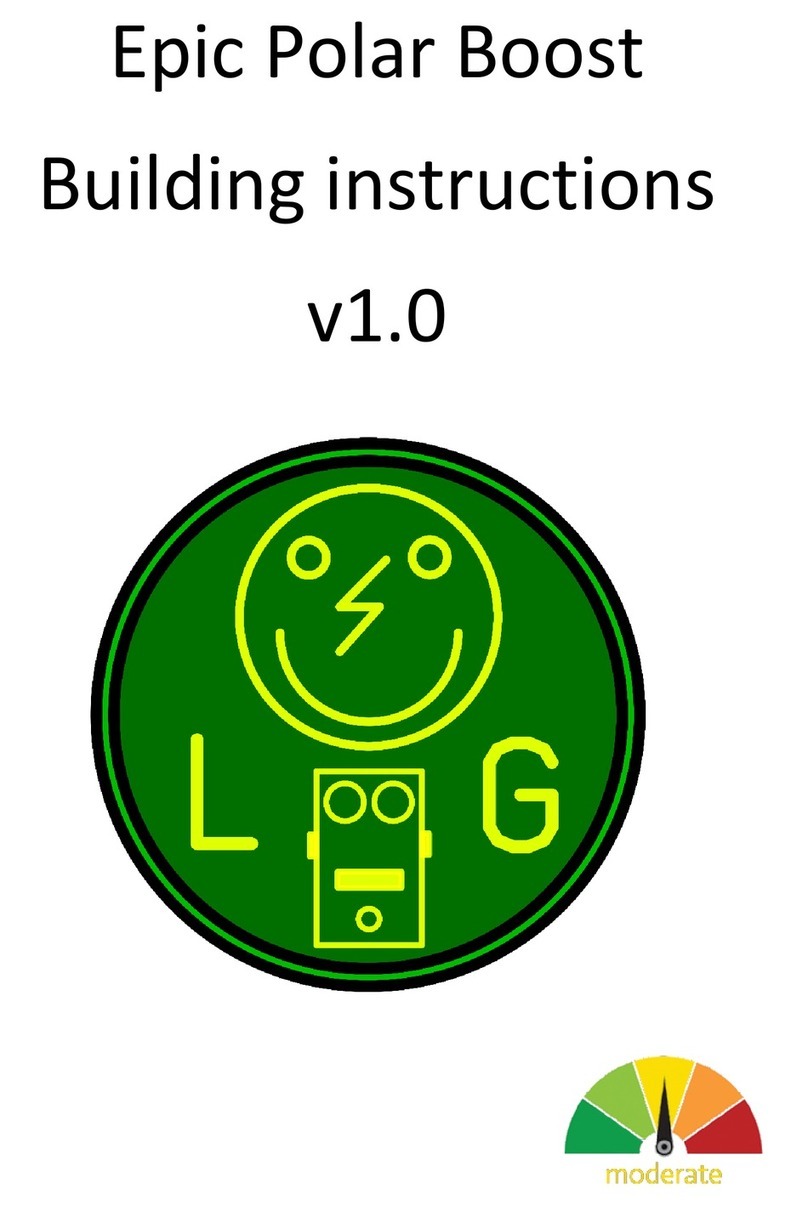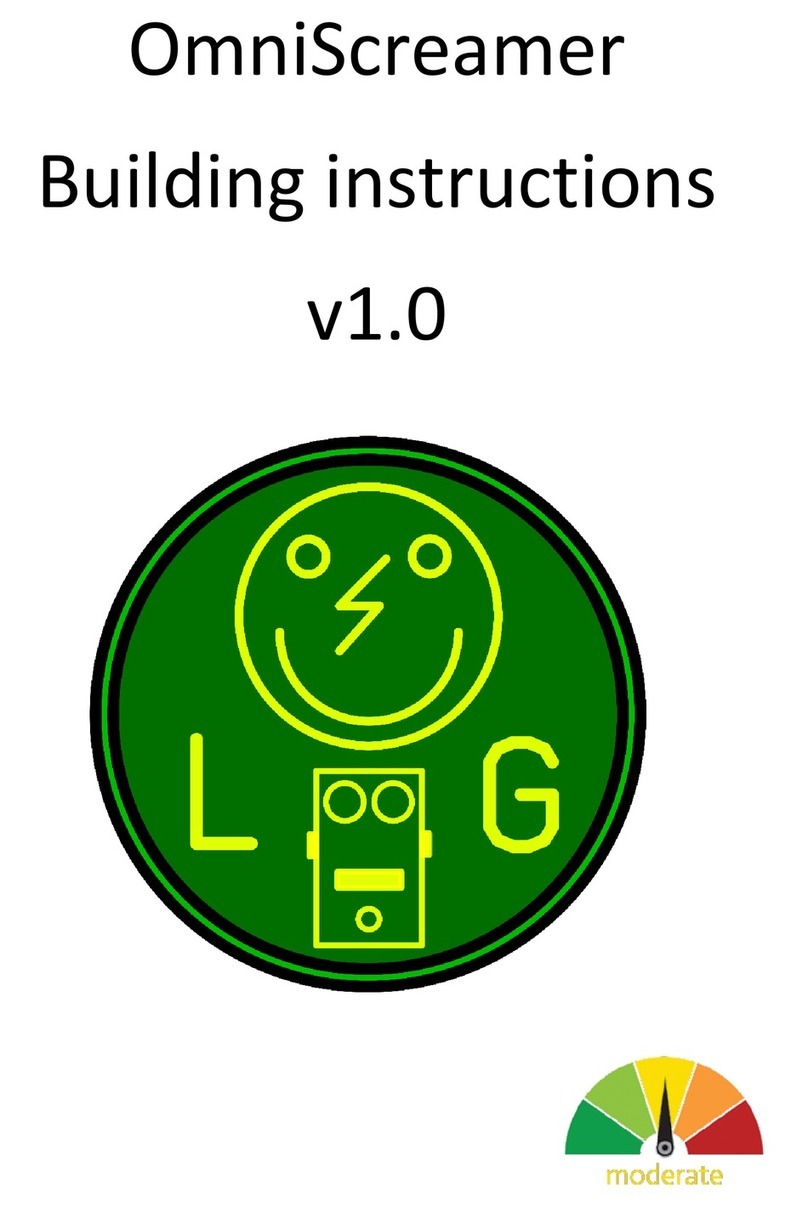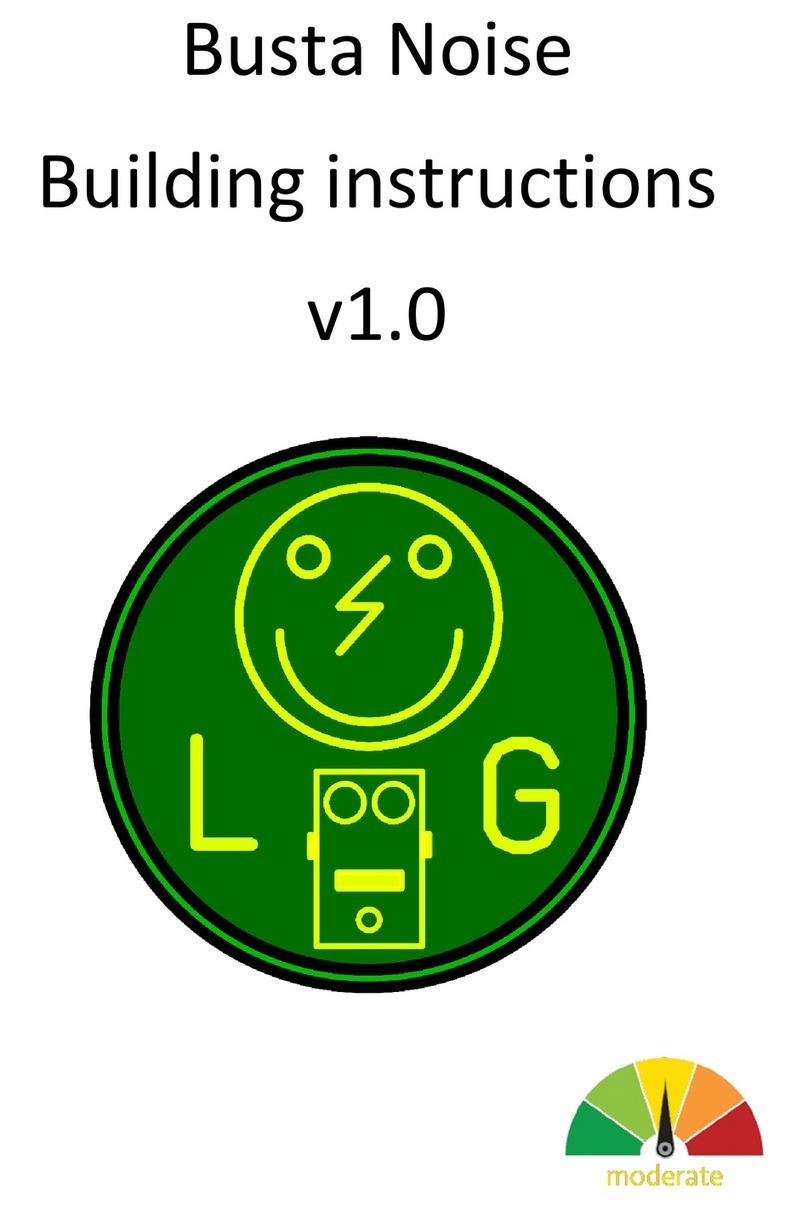Components
Since the OmniWah can be used to build so many different types of wahs, we split off the
components section in to a separate document with all possible configurations.
My advice: Capacitors with values < 1nF should be MLCC, values of 1nF –1µF should be
SMF/MKT/MKS and all values > 1µF are Electrolytic.
Then there is always the magic question: “Will it really sound like a <your favorite wah brand and
series here>?”. Well, that depends on the quality of the parts you are using. I will not go into a rant
about parts (vintage or not) but I will give you my personal view based on building all the
configurations and comparing some of them to the original.
Inductor
I think this is the most important part to invest in. You can go 2 ways on this. First, you could buy the
prefab ones from eg. Dunlop™ or Vox™, but changes are you will not get to the tonal characteristics
of your configuration (unless it is a modern Dunlop™ or Vox™ ☺). Next, you can buy a real vintage
one. You will have a very hard time finding a genuine vintage inductor so the best way to go here is
to buy them from people who custom wind them. This will cost you more, but these people often
made it their lifework to master this art.
Wah Pot
Also very important. A well enclosed pot will last longer and the type of taper will influence the
sweep characteristics. But do not be fooled by sellers who charge you an arm and a leg for a single
pot. Experiment and find out yourself
Resistors and capacitors
Ok, this is going to get me some hate mail. I found no (real) tonal difference using vintage carbon
composition resistors or modern metal film resistors. I am NOT a certified electrical engineer so this
is based on simply experimenting.
Ditto goes for the capacitors. I used mostly WIMA, SMF and electrolytic capacitors from Panasonic™
and they sound great everywhere. I know that there is a lot of discussion about this on the internet
so feel free to totally disagree with me.
None the less the value and tolerance of these components influence the sound greatly. Components
have a spread in their values. Every part is sold with these values inside a certain tolerance. Carbon
Composite are +/- 5% and while metal film mostly are +/- 1%. Capacitors are even worse. Generally
the tolerance is about +/- 10% but can also be +/- 20% or even +/- 5%. It depends. This is (only) one
of the reasons that no 2 effects of the same type really sound the same. To conclude: sound is more
influenced by the tolerance (and change of that over the years) of the components then the brand.
Recreating an effect should also mean that the exact value of the components should be measured
and not just their advertised value. An old 20% 4.7µF will range between 3.76 µF and 5.64 µF. This
can and will have a lot of influence in a RC filter!
To conclude, there is also the influence of temperature. Every component will measure different
under different temperatures. So, at -20oC an effect might sound different then at +40oC.




